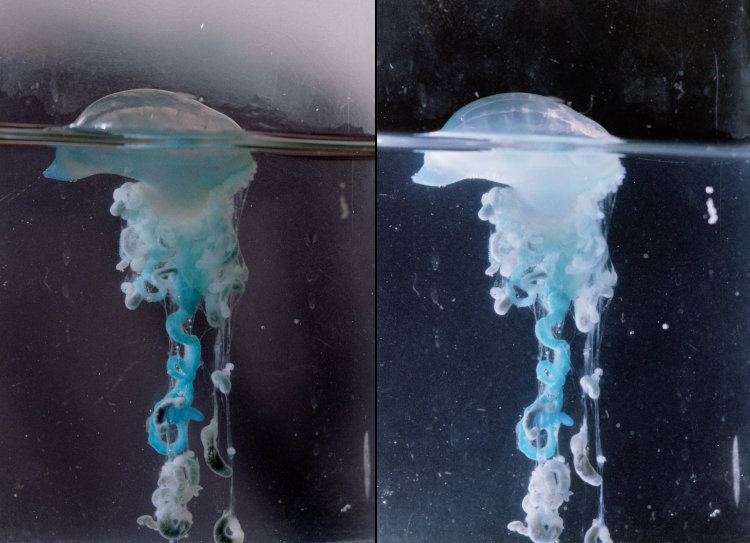And so we come to the last of this year’s topic, with the realization as I type this that I don’t have next year’s lined up yet – but I’m typing this more than a week before it will appear, so I have two weeks, give or take, to contemplate the problem.
For now, we have a critter that’s appeared here just once, though I’ve photographed them twice; the first time was in Florida, like twenty years ago, and was actually a captive specimen, one that I’d captived all by myself, I should add.

Yes, it’s a Portuguese man o’ war (Physalia physalis,) one of the few highly dangerous “jellyfish” that can be found in this area, and this one was washed up on the shore of Shackleford Banks, NC, while we were visiting there just shy of a year ago. It’s not a true jellyfish, but instead a siphonophore, a hydrozoan, or perhaps I should say they’re hydrozoans, because it’s not one organism, but four distinct organisms that live symbiotically, a floating commune. The bit that you need to be careful of, here looking like a tangle of navy blue yarn, are the tentacles or polyps, which contain the stinging nematocysts, and while I have not had the pleasure myself, by all accounts if you encounter these, you will be made well aware of it immediately (and probably loudly.) The most visible organism, looking like a sad balloon, is the bladder-sail (pneumatophore) on top, for buoyancy and indeed catching the wind to travel. The other bits are, essentially, stomachs and reproductive organisms. Now, how one of the organisms is the reproductive bit for the other three, I don’t pretend to understand, and it’s entirely possible biologists are having us on just so they can tell one another apart at parties, their nerdy idea of a secret handshake.

The day was largely overcast when we were there, so I used my pocket flashlight to provide backlighting to this specimen(s) to bring up the color better. Washed up on the shore and dying, they’re still dangerous, and you’d think that they wouldn’t be hard to spot when you see closeups like this, but among the typical flotsam (or is it jetsam?) on a barrier island like this, they can about disappear to the unwary. And no, if you happen to be stung, even by a jellyfish, don’t urinate on it – that’s another bit of nonsense internet lore.
As for the one in Florida that I so bravely captured, it was another washup, but an extremely tiny one, small enough that I could shovel it into a film can (ask your grandfather what that is) with a bit of debris, to photograph it in a macro aquarium back home. Yes, I did take care to ensure that no tentacles or parts thereof were hanging outside of the can before I closed it and stuck it in my pocket. The resulting images… well, they looked like this:

… were nothing great, making it clear that the specimen was on its way out and not showing much of the distinctive colors that they’re known for. While I kept a saltwater aquarium at the time, I did not introduce this one into it at all, not just from the danger to the other inhabitants (which were mostly crabs and shrimp anyway,) but because it was simply going to rot in there. Plus I had to reach in there routinely, and who wants to explain that one to the emergency room physicians?
Enjoy the holidays, everyone!



















































